Balingasag
Balingasag, officially the Municipality of Balingasag (Cebuano: Lungsod sa Balingasag; Tagalog: Bayan ng Balingasag), is a 2nd class municipality in the province of Misamis Oriental, Philippines. According to the 2015 census, it has a population of 67,059 people. [3]
Balingasag | |
|---|---|
| Municipality of Balingasag | |
 | |
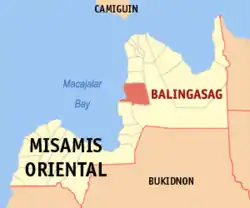 Map of Misamis Oriental with Balingasag highlighted | |
OpenStreetMap 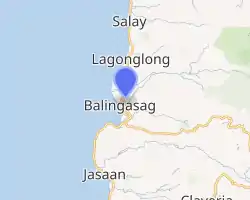
| |
.svg.png.webp) Balingasag Location within the Philippines | |
| Coordinates: 8°45′N 124°47′E | |
| Country | |
| Region | Northern Mindanao (Region X) |
| Province | Misamis Oriental |
| District | 1st District |
| Founded | 1842 |
| Barangays | 30 (see Barangays) |
| Government | |
| • Type | Sangguniang Bayan |
| • Mayor | Alexis S. Quina |
| • Vice Mayor | Felix H. Borromeo |
| • Representative | Christian S. Unabia |
| • Electorate | 47,768 voters (2019) |
| Area | |
| • Total | 147.11 km2 (56.80 sq mi) |
| Elevation | 47 m (154 ft) |
| Population | |
| • Total | 67,059 |
| • Density | 460/km2 (1,200/sq mi) |
| • Households | 14,514 |
| Economy | |
| • Income class | 2nd municipal income class |
| • Poverty incidence | 35.77% (2015)[4] |
| • Revenue | ₱145,399,141.46 (2016) |
| Time zone | UTC+8 (PST) |
| ZIP code | 9005 |
| PSGC | |
| IDD : area code | +63 (0)88 |
| Climate type | tropical climate |
| Native languages | Cebuano Binukid Subanon Tagalog |
| Website | www |
The town is being pushed to be included in the UNESCO World Heritage List due to its impressive array of colonial structures with hints of indigenous Mindanaoan architecture.
Barangays
Balingasag is politically subdivided into 30 barangays.
- Balagnan
- Baliwagan
- San Francisco
- Binitinan
- Blanco
- Calawag
- Camuayan
- Cogon
- Dansuli
- Dumarait
- Hermano
- Kibanban
- Linabu
- Linggangao
- Mambayaan
- Mandangoa
- Napaliran
- Barangay 1 (Poblacion)
- Barangay 2 (Poblacion)
- Barangay 3 (Poblacion)
- Barangay 4 (Poblacion)
- Barangay 5 (Poblacion)
- Barangay 6 (Poblacion)
- Quezon
- Rosario
- Samay
- San Isidro
- San Juan
- Talusan
- Waterfall
History
Balingasag started as a pre-Hispanic settlement, which was eventually discovered by the Spaniards when they came to colonize the Philippines. Presumably, the name came from two contracted Cebuano words "baling", which means fishing net, and "kasag", crab.
Legend has it that one day during the Spanish regime a group of guardia civil, while patrolling the seashore near the settlement of the natives, chanced upon some fishermen pulling fishing nets. A guardia civil asked a fisherman for the name of the place. Not understanding the language and thinking that he was asked what he what was doing, the fisherman, pointing his finger to the net, answered “baling”, and then turning it to the contents of the boat nearby, added “kasag”.
According to early accounts, the present town site of Balingasag was heavily forested, making it the favorite hiding place of bandits and pirates, who constantly terrorized the inhabitants. One of the notorious groups marauding the area was that of Datu Gumpot, who made the area now occupied by Cala-cala, a sitio of Barangay Cogon, as his base. This place was then known as Gumpot Kitagtag. The presence of these lawless elements in the area made the inhabitants evacuate to safer places every now and then.
Gumpot's group later on disappeared and never came back. This motivated the natives to settle. One group, however, moved to Galas, a part of the place known as Sabangan, an area somewhere between what is now Barangay Waterfall and Barangay Baliwagan. The other group remained at Gumpot Kitagtag.
Galas was ruled by Datu Marcos and his wife, Ba’ai Gregoria. On the other hand, Gumpot Kitagtag was under Datu Mateo and his wife Ba’ai Tomasa. Though these rulers now had their own territory, they remained true and loyal to each other. Marriages between the members of these two tribes further strengthened the bond that had since bound the two leaders. Notable of these conjugal unions was that of Marcos Antonio, the son of Datu Marcos, and Rita Gregoria, the daughter of Datu Mateo.
Eventually, these two great leaders died and were succeeded by their sons. Marcos Antonio became the Datu of Galas and Manuel Mateo ruled Gumpot Kitagtag. These new leaders maintained the alliance established by their predecessors. They constantly communicated with each other and discussed means, or undertook activities, to improve their settlements.
In one of their meetings, the idea of establishing a common place, where the members of their tribes could meet and conduct commercial or social activities, was developed. The two rulers, together with their respective followers, presented their choices. Finally, they decided to locate their meeting place or “poblacion” diha tungod nianang balinganan ta sa kasag (in the place where we catch crabs). This place was part of Galas.
The “poblacion” grew and became popular. In 1749, the Spanish Authority recognized the place and the whole territory of Sabangan under the name Balingasag. Thus, Sabangan could be considered as the old Balingasag.
In 1790, a great flood swept Sabangan, leaving the inhabitants nothing but desolation and depression. After the flood, the leader of Galas this time, Datu Antonio Ramon, the son of Datu Marcos Antonio, proposed to his followers the notion of transferring their settlement to a safer place. The inhabitants loved their place so much that they disagreed with the idea of their chieftain. In the end, however, the leader prevailed upon the followers.
Datu Antonio Ramon and his followers eyed Gumpot Kitagtag, now under the control of Datu Mamerto Manuel, the son and successor of Datu Manuel Mateo, as the ideal place to relocate. Negotiations ensued. After the conditions were agreed by both parties, the transfer began sometime in 1793 and was completed in 1810.
One of the important agreements between the two groups was to divide the poblacion into two. The present Rizal Street, then called Calle Real, which now traverses the span between the gate of Balingasag Central School and the town's wharf, became the demarcation line. All lots on the right side of this street, when facing mountain, and all agricultural lands as far as Baliwagan, would belong to Datu Antonio Ramon and his followers. To Datu Mamerto Manuel and his followers went all the lots on the opposite side of the poblacion and all the agricultural lands as far as Mandangoa. Governor General Narciso Claveria issued on 21 November 1841 a decree (Renovacion de Apellidos) requiring the natives to change their family names and if they had none, they have to adopt a new one. Consequently, Datu Mamerto Manuel chose “Valmores” as his surname, while Datu Antonio Ramon opted for “Madroño”.
Balingasag, being the name recognized by the Spanish Authority, gradually replaced the name of the territory that was Gumpot Kitagtag. In 1842, Balingasag was finally given official recognition as a town through a Spanish Royal Decree. If this royal decree were the basis of the existence of the present Balingasag, Mamerto Manuel Valmores and Antonio Ramon Madroño would then be considered as the “Founding Patriarchs” of this municipality.
The royal recognition of Balingasag as a political or administrative entity under the Spanish sovereignty engendered new systems and structures of governance, which supplanted the indigenous ways of running community affairs. This time the head of the community was the gobernadorcillo, which bore the title capitan. This position is equivalent to the present day Municipal Mayor.
Mamerto Manuel Valmores was appointed in 1820 as the first gobernadorcillo of the town. The last gobernadorcillo was Leon Valmores. Holding this position for about 16 years (1822-1837), Francisco Anuario Valmores, the eldest son of Mamerto Manuel, may be considered as the longest serving gobernadorcillo.
New leaders had surfaced as changes in the Philippine government took place. Faustino Vega became the first town executive, which has known that time as presidente local, under the short-lived First Philippine Republic (1898-1903). Melquiades Vega, the son of Faustino Vega, served as the first presidente local under the American Regime (1903-1928).
Ramon Neri Ludeña became the first mayor under the Commonwealth Government while Jose P. Roa served the same position during World War II (1938-1944). The first municipal mayor under the Republic of the Philippines was Gorgonio B. Tagarda.
The more recent elected town mayors included Manuel Varquez; Alejo E. Olano, Sr; Porferio R. Roa; Andrea H. Borromeo, Felix H. Borromeo and lawyer Alexis Quina, who is known for civil development. Marietta R. Abogado, daughter of former municipal mayor Porferio Roa assumed the town's top post last June 30, 2016.
Demographics
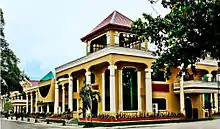
|
| ||||||||||||||||||||||||||||||||||||||||||||||||
| Source: Philippine Statistics Authority [3] [5] [6][7] | |||||||||||||||||||||||||||||||||||||||||||||||||
In the 2015 census, the population of Balingasag, Misamis Oriental, was 67,059 people, [3] with a density of 460 inhabitants per square kilometre or 1,200 inhabitants per square mile.
Climate
| Climate data for Balingasag, Misamis Oriental | |||||||||||||
|---|---|---|---|---|---|---|---|---|---|---|---|---|---|
| Month | Jan | Feb | Mar | Apr | May | Jun | Jul | Aug | Sep | Oct | Nov | Dec | Year |
| Average high °C (°F) | 28 (82) |
28 (82) |
29 (84) |
30 (86) |
30 (86) |
30 (86) |
30 (86) |
30 (86) |
30 (86) |
29 (84) |
29 (84) |
28 (82) |
29 (85) |
| Average low °C (°F) | 23 (73) |
23 (73) |
23 (73) |
23 (73) |
25 (77) |
25 (77) |
25 (77) |
25 (77) |
25 (77) |
25 (77) |
24 (75) |
24 (75) |
24 (75) |
| Average precipitation mm (inches) | 327 (12.9) |
254 (10.0) |
185 (7.3) |
128 (5.0) |
215 (8.5) |
273 (10.7) |
248 (9.8) |
243 (9.6) |
214 (8.4) |
246 (9.7) |
271 (10.7) |
271 (10.7) |
2,875 (113.3) |
| Average rainy days | 24.3 | 21.1 | 22.5 | 20.6 | 28.3 | 28.8 | 29.4 | 29.0 | 28.0 | 28.3 | 26.0 | 24.2 | 310.5 |
| Source: Meteoblue [8] | |||||||||||||
List of Cultural Properties of Balingasag
| Cultural Property wmph identifier |
Site name | Description | Province | City/municipality | Address | Coordinates | Image |
|---|---|---|---|---|---|---|---|
| Abuzo House | Misamis Oriental | Balingasag | 849 Valmores St. | 8.744485°N 124.775504°E | 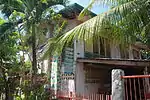 | ||
| Acantilado House | Misamis Oriental | Balingasag | F. Vega corner Mabini Sts. | 8.74499°N 124.778791°E | 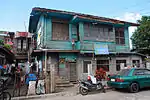 | ||
| Albason Roa House | Misamis Oriental | Balingasag | Ludeña cor. Tres Martires Sts. | 8.74242°N 124.775412°E | 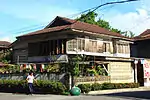 | ||
| Almendrala Ancestral House | Misamis Oriental | Balingasag | Tres Martires cor. Olano Sts. | 8.741639°N 124.773545°E |  | ||
| Amparo Valmores-Roa House | Misamis Oriental | Balingasag | 15 de Setiembre St. | 8.744971°N 124.778407°E | 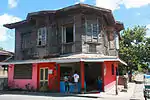 | ||
| Anastacio Bablera, Sr. House | Misamis Oriental | Balingasag | Tres Martires cor. Capili Sts. | 8.74141°N 124.77553°E | 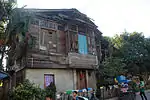 | ||
| Antonio Buzun House | Misamis Oriental | Balingasag | 15 de Setiembre St. | 8.745034°N 124.778534°E | 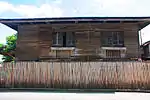 | ||
| Apolonio Kalaga Gamolo Ancestral House | Misamis Oriental | Balingasag | 50 M. E. Mundo St. | 8.746314°N 124.776536°E | 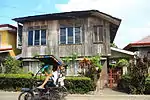 | ||
| Apolonio Pabelonio House | Misamis Oriental | Balingasag | Varquez St. | 8.745327°N 124.777958°E | 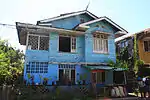 | ||
| Bahica House | Built in 1945 | Misamis Oriental | Balingasag | Tres Martires cor. Capili Sts. | 8.741336°N 124.77581°E | 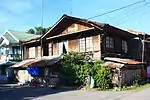 | |
| Valdehueza House | Misamis Oriental | Balingasag | Ludeña cor. Mabini Sts. | 8.744261°N 124.779289°E | 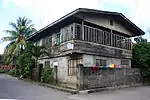 | ||
| Balingasag Catholic Cemetery | With extant hewn stone perimeter fence | Misamis Oriental | Balingasag | J. P. Roa St. | 8.746555°N 124.774458°E | 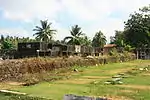 | |
| Balingasag Central Elementary School | American-era, Gabaldon-type School building | Misamis Oriental | Balingasag | Lopez Jaena St. | 8.74489°N 124.779974°E |  | |
| Barretto House | Misamis Oriental | Balingasag | Cailing St. | 8.745565°N 124.776817°E | 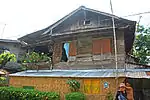 | ||
| Bautista-Roa House | Misamis Oriental | Balingasag | Cailing cor. Malvar Sts. | 8.746015°N 124.777247°E | 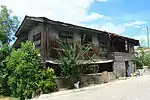 | ||
| Beneta Fernandez Ancestral House | Misamis Oriental | Balingasag | 10 Valmores cor. Seriña Sts. | 8.74503°N 124.777045°E |  | ||
| Cornelio Echeveria-Galdo House | Misamis Oriental | Balingasag | 15 de Septiembre cor. Mabini Sts. | 8.745282°N 124.778665°E | 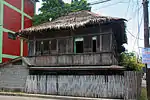 | ||
| Cubillo-Luardo Maternity Clinic | Misamis Oriental | Balingasag | Rizal cor. Varquez Sts. | 8.74427°N 124.778695°E | 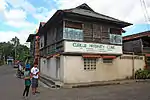 | ||
| Delos Reyes House | Misamis Oriental | Balingasag | Varquez St. | 8.746686°N 124.777629°E | 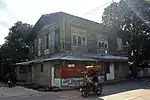 | ||
| Delos Santos House | Erected in 1910 | Misamis Oriental | Balingasag | Varquez St. | 8.746016°N 124.777948°E | 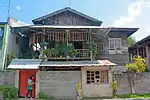 | |
| Dr. Lino M. Seriña House | Misamis Oriental | Balingasag | Valmores cor. Regalado Sts. | 8.744996°N 124.776534°E | 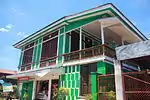 | ||
| Nemesio and Ciriaca Vega's Residence | Misamis Oriental | Balingasag | Ludeña cor. Regalado Sts. | 8.743122°N 124.757171°E | 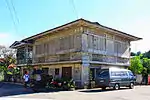 | ||
| Emeterio Moreno Ancestral House | Misamis Oriental | Balingasag | Ludeña cor. Roa Sts. | 8.743005°N 124.776846°E | 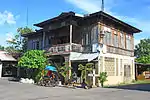 | ||
| Emilio Domo Ancestral House | Misamis Oriental | Balingasag | M. E. Mundo cor. Varquez Sts. | 8.746725°N 124.777356°E | 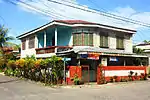 | ||
| Gervacio Gamolo Sr. Ancestral House | Misamis Oriental | Balingasag | Cailing cor. Seriña Sts. | 8.74547°N 124.776631°E | 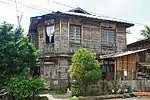 | ||
| Fructuoso Ebcas House | Misamis Oriental | Balingasag | M.E. Mundo cor. J. P. Roa Sts. | 8.745351°N 124.774772°E | 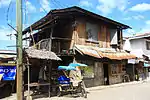 | ||
| Soliva House | Misamis Oriental | Balingasag | Madronio St. | 8.741795°N 124.775241°E | 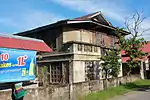 | ||
| Go House | Misamis Oriental | Balingasag | F. Vega cor. Seriña Sts. | 8.79407°N 124.777408°E | 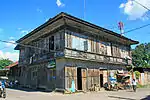 | ||
| Go King House | Misamis Oriental | Balingasag | F. Vega cor. Varquez Sts. | 8.744733°N 124.778274°E | 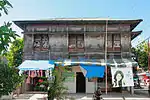 | ||
| Gora & Vergara Ancestral House | Misamis Oriental | Balingasag | F. Vega cor. Varquez Sts. | 8.744824°N 124.778467°E |  | ||
| Hermogenes Sabugan House | Misamis Oriental | Balingasag | F. Vega cor. Mabini Sts. | 8.744857°N 124.779049°E |  | ||
| Ignacio Valmores House | Misamis Oriental | Balingasag | 105 Cailing cor. Varquez Sts. | 8.746217°N 124.777603°E | 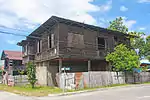 | ||
| Inguito House | Misamis Oriental | Balingasag | M.E. Mundo cor. Malvar Sts. | 8.746581°N 124.777004°E | 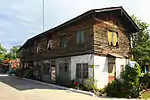 | ||
| Isabelo Roa House | Misamis Oriental | Balingasag | Valmores cor. Malvar Sts. | 8.74542°N 124.777329°E | 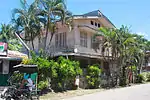 | ||
| Jesus Chaves Ancestral House | Misamis Oriental | Balingasag | 15 de Setiembre St. | 8.74471°N 124.777219°E | 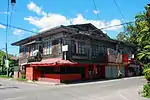 | ||
| Jose Autor House | Misamis Oriental | Balingasag | 1046 Cailing cor. J. P. Roa Sts. | 8.74479°N 124.774927°E |  | ||
| Jose Moreno House | Misamis Oriental | Balingasag | Ludeña cor. Roa Sts. | 8.744929°N 124.776661°E | 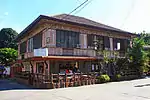 | ||
| Jose Valmores Pimentel House | Misamis Oriental | Balingasag | Cailing cor. Roa Sts. | 8.745034°N 124.77585°E | 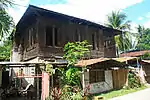 | ||
| Juan Almendrala House | Misamis Oriental | Balingasag | Olano cor. Unnamed Road | 8.741678°N 124.775021°E |  | ||
| Juan Salvane House | Misamis Oriental | Balingasag | Tres Martires St. | 8.741848°N 124.7775451°E | 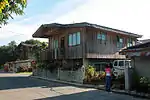 | ||
| Juanito Valmores House | Misamis Oriental | Balingasag | Rizal cor. Mabini Sts. | 8.744633°N 124.779119°E | 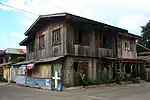 | ||
| Lagumbay House | Misamis Oriental | Balingasag | M.E. Mundo cor. J.P. Roa | 8.745471°N 124.774959°E | 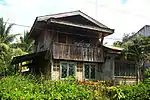 | ||
| Leovegildo Sinogaya House | Misamis Oriental | Balingasag | Cailing St. | 8.744723°N 124.774755°E | 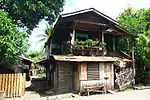 | ||
| Ludeña House | Misamis Oriental | Balingasag | Ludeña cor. Tres Martires Sts. | 8.72374°N 124.775207°E | 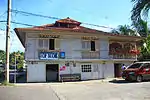 | ||
| Macario Ladera House | Misamis Oriental | Balingasag | Capili St. | 8.740896°N 124.775025°E |  | ||
| Magsalay House | Misamis Oriental | Balingasag | 1008 15 de Setiembre St. | 8.743881°N 124.775264°E | 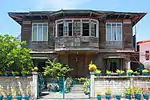 | ||
| Mangubat House | Misamis Oriental | Balingasag | 145 Cailing cor. Roa Sts. | 8.745234°N 124.775791°E | 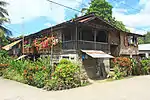 | ||
| Maria and Maximo Achas Ancestral House | Misamis Oriental | Balingasag | M. E. Mundo St. | 8.745203°N 124.774509°E | 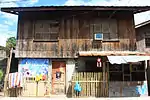 | ||
| Maximo Valmores House | Misamis Oriental | Balingasag | Valmores cor. Seriña Sts. | 8.745202°N 124.77694°E | 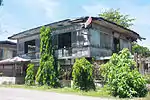 | ||
| Mayuman Ancestral House | Misamis Oriental | Balingasag | F. Vega St. | 8.744728°N 124.778764°E | 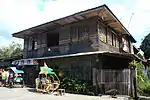 | ||
| Melquides Achas Ancestral House | Misamis Oriental | Balingasag | 138 M. E. Mundo cor. Osmeña Sts. | 8.745483°N 124.775417°E | 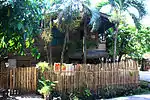 | ||
| Mercado Avelino House | Misamis Oriental | Balingasag | 118 Cailing cor. Roa Sts. | 8.745361°N 124.775933°E | 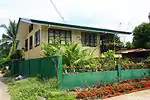 | ||
| Mercado Valmores House | Misamis Oriental | Balingasag | 15 de Setiembre cor. Varquez Sts. | 8.745168°N 124.778267°E |  | ||
| Cuerquez Ancestral House | Ancestral house of Tirso Cuerquez, son of Saturnino Cuerquis | Misamis Oriental | Balingasag | Tres Martires cor. Madronio Sts. | 8.742035°N 124.775364°E | 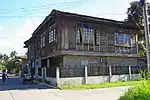 | |
| Olano House | Misamis Oriental | Balingasag | Regalado cor. F. Vega Sts. | 8.744161°N 124.776966°E | 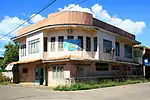 | ||
| Pedro Zaballero Ancestral House | Misamis Oriental | Balingasag | 12 M. E. Mundo cor, Varquez Sts. | 8.746561°N 124.777407°E | 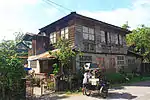 | ||
| Prisco Fabre House | Misamis Oriental | Balingasag | 45 Varquez cor. Valmores Sts. | 8.745672°N 124.777849°E | 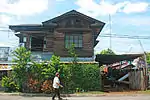 | ||
| Prudencio Roa Ancestral House | Misamis Oriental | Balingasag | Valmores cor. Seriña Sts. | 8.745139°N 124.776784°E | 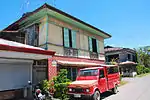 | ||
| Ramona Pabualan-Sabal House | Misamis Oriental | Balingasag | Cailing cor. Malvar Sts. | 8.745883°N 124.777336°E |  | ||
| Ramon Chua House | Misamis Oriental | Balingasag | Rizal cor. Malvar Sts. | 8.744036°N 124.778266°E | 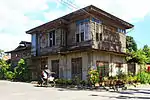 | ||
| Ramon Roa Sr. House | Misamis Oriental | Balingasag | Cailing cor. Malvar Sts. | 8.745766°N 124.777184°E | 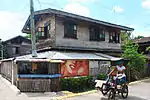 | ||
| Ricardo Singhedas House | Misamis Oriental | Balingasag | Valmores cor. Osmeña Sts. | 8.744649°N 124.775805°E | 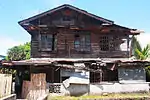 | ||
| Roa-Miguel Ancestral House | Misamis Oriental | Balingasag | Ludeña cor. Mabini Sts. | 8.744016°N 124.779357°E |  | ||
| Rogelio Mercado House | Misamis Oriental | Balingasag | Ludeña cor. Malvar Sts. | 8.743591°N 124.778461°E | 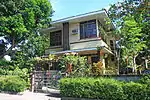 | ||
| Severino and Purificacion Romualdo House | Misamis Oriental | Balingasag | Cailing cor. J. P. Roa Sts. | 8.744639°N 124.775054°E | 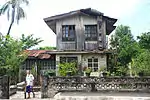 | ||
| Roque Valmores Ancestral House | Erected on August 16, 1938 | Misamis Oriental | Balingasag | M. E. Mundo cor. Seriña Sts. | 8.746189°N 124.776314°E |  | |
| Santa Rita de Cascia Parish Church | Spanish-era brick church | Misamis Oriental | Balingasag | Tres Martires St. | 8.743301°N 124.775318°E |  | |
| Serna-Valmores House | Misamis Oriental | Balingasag | Varquez St. | 8.745923°N 124.777969°E | 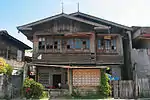 | ||
| Severino Pimentel House | Misamis Oriental | Balingasag | Ludeña cor. Regalado Sts. | 8.743324°N 124.77384°E |  | ||
| Tan House | Misamis Oriental | Balingasag | 15 de Setiembre St. | 8.745213°N 124.779002°E | 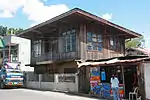 | ||
| Tanasia Roa House | Misamis Oriental | Balingasag | 1011 M. E. Mundo St. | 8.745558°N 124.775143°E | 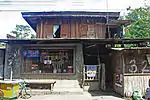 | ||
| Teodolo Velos House | Misamis Oriental | Balingasag | Tres Martires cor. Capili Sts. | 8.741551°N 124.77597°E | 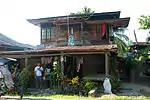 | ||
| Unnamed House 1 in Brgy 1 | Misamis Oriental | Balingasag | 15 de Setiembre St. | 8.74517°N 124.778422°E | 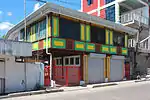 | ||
| Unnamed House 2 in Brgy 2 | Misamis Oriental | Balingasag | 15 de Setiembre cor. Seriña Sts. | 8.744532°N 124.777249°E |  | ||
| Unnamed House in Barangay 3 | Misamis Oriental | Balingasag | Regalado cor. F. Vega Sts. | 8.743912°N 124.77706°E | 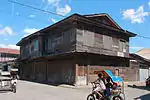 | ||
| Unnamed House in Barangay 5 | Misamis Oriental | Balingasag | Tres Martires cor. Madronio Sts. | 8.742298°N 124.775476°E | 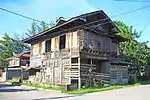 | ||
| Valdovino Zaballero Ancestral House | Misamis Oriental | Balingasag | M. E. Mundo St. | 8.746528°N 124.777308°E | 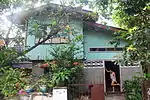 | ||
| Valmores House | Misamis Oriental | Balingasag | 94 Varquez St. | 8.745905°N 124.777762°E | 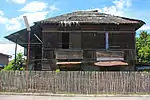 | ||
| Vega Ancestral House | Misamis Oriental | Balingasag | Regalado cor. Rizal Sts. | 8.743611°N 124.77723°E | 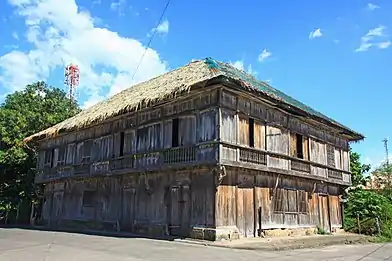 | ||
| Vicente Macas House | Misamis Oriental | Balingasag | Valmores St. | 8.74543°N 124.777766°E | 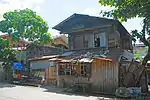 |
Attractions

- Vega Ancestral House - located in the Poblacion district, is a preserved Philippine colonial house which has been visited by national leaders like General Emilio Aguinaldo and President Sergio Osmeña, and Gura - Vergara house that was established 1878. It was where then Inday Badiday, former showbiz anchor, lived as she was from Balingasag.
- St. Rita's College of Balingasag - founded in 1901, the first Catholic School in Balingasag and is also among the top schools in the province.
References
- Municipality of Balingasag | (DILG)
- "Province: Misamis Oriental". PSGC Interactive. Quezon City, Philippines: Philippine Statistics Authority. Retrieved 12 November 2016.
- Census of Population (2015). "Region X (Northern Mindanao)". Total Population by Province, City, Municipality and Barangay. PSA. Retrieved 20 June 2016.
- "PSA releases the 2015 Municipal and City Level Poverty Estimates". Quezon City, Philippines. Retrieved 12 October 2019.
- Census of Population and Housing (2010). "Region X (Northern Mindanao)". Total Population by Province, City, Municipality and Barangay. NSO. Retrieved 29 June 2016.
- Censuses of Population (1903–2007). "Region X (Northern Mindanao)". Table 1. Population Enumerated in Various Censuses by Province/Highly Urbanized City: 1903 to 2007. NSO.
- "Province of Misamis Oriental". Municipality Population Data. Local Water Utilities Administration Research Division. Retrieved 17 December 2016.
- "Balingasag: Average Temperatures and Rainfall". Meteoblue. Retrieved 29 April 2020.
External links
| Wikimedia Commons has media related to Balingasag, Misamis Oriental. |